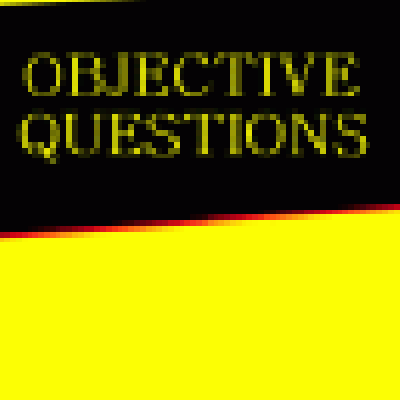OPERATIONS RESEARCH
Price:
Rs500
Part One:
Q1. In case of (<=) inequality, to convert the inequality to an equation, we used to add a slack variable to the left hand side of the constraint, this slake variable should be:
-
Negative
-
Positive
-
May be positive or negative
-
Zero
Q2. In a set of m Χ n equations (m<n) the maximum number of corner points is given by…………
Q3. According to penalty rule for artificial variables, the objective coefficient of the artificial variable represents an appropriate penalty, positive or negative depending on the problem, but the necessary condition required to hold this is, the value should be:
-
∞
-
0
-
1
-
None of the above
Q4. The cases of the Simplex method in which the value of the variables may increased indefinitely without change in the constraints is:
-
Degeneracy
-
Alternative optima
-
Unbounded solutions
-
Nonexisting solutions
Q5. An arc in network model is said to be ‘Directed’ if it allows positive flow in one direction and
-
Negative flow in negative direction
-
Zero flow in negative direction
-
Negative flow in perpendicular direction
-
None of the above
Q6. PERT stands for……………………………………………………………………………………..
Q7. In preemptive method for goal programming , the optimum value of a higher priority goal is never degraded by a lower priority goal.(T/F)
Q8. The column dropping rule does not guarantee the non degradation of higher priority goals.(T/F)
Q9. The additive algorithm developed by E Balas for solving ILP problems was based on pure binary variables.(T/F)
Q10. According to inventory model for commodity possession for smooth business operation, Holding cost represents:
-
Price per unit of an inventory item.
-
The fixed charge incurred when an order is placed regardless of its size.
-
The cost of maintaining inventory in stock.
-
None of the above
Part Two:
-
What do you understand by ‘Degeneracy’ found in using simplex method?
-
What do know about ‘The Balancing of Transportation Model’? If unbalanced then remedy.
-
Explain ‘Vogel Approximation Model (VAM)’.
-
Explain ‘Dijkstra’s Algorithm’ for routing.
Q1. The stock of WalMark Stores, Inc., trades on the New York Stock Exchange under the symbol WMS. Historically, the price of WMS goes up with the increase in the Dow average 60% of the time and goes down with the DOW 25% of the time. There is also a 5% chance that WMS will go up when the Dow goes and 10% that it will go down when the Dow goes up.
-
a) Determine the probability that WMS will go up regardless of the Dow.
-
b) Find the probability that probability that WMS goes up given that the Dow is up?
-
c) What is the probability WMS goes down given that Dow is down?
-
Prove that if the probability P {A/B} = P {A}, then A and B must be independent.
Q3. Tasco Oil owns a pipeline booster unit that that operates continuously. The time between breakdowns for each booster is exponential with a mean of 20 hours. The repair time is exponential with mean 3 hours. In a particular station, two repairpersons attend 10 boosters. The hourly wage for each repairperson is $18. Pipeline losses are estimated to be $30 per broken booster per hour. Tasco is studying the possibility of hiring an additional repairperson.
-
a) Will there be any cost savings in hiring a third repairperson?
-
b) What is the schedule loss in dollars per breakdown when the number of repairpersons on duty is two? Three?
Q4. Cars arrive at a one-bay car wash facility the interarrival time is exponential, with a mean of 10 minutes. Arriving cars line up in a single lane can accommodate at most five waiting cars. If the lane is full, newly arriving cars will go elsewhere. It takes between 10 and 15 minutes, uniformly distributed, to wash a car. Simulate the system for 960 minutes, and estimate the time a car spends in the facility?
-
Define Transportation Model and its variant in brief.
-
Explain in detail Game Theory. Support you answer examples.
1. Case study solved answers
2. pdf/word
3. Fully Solved with answers







